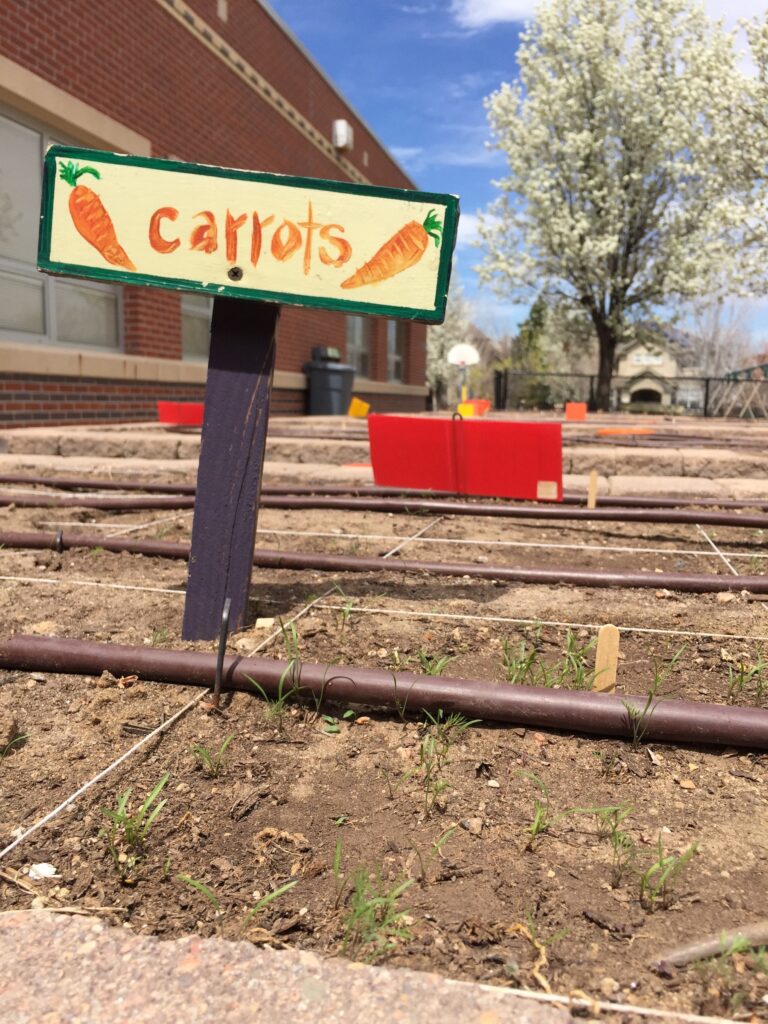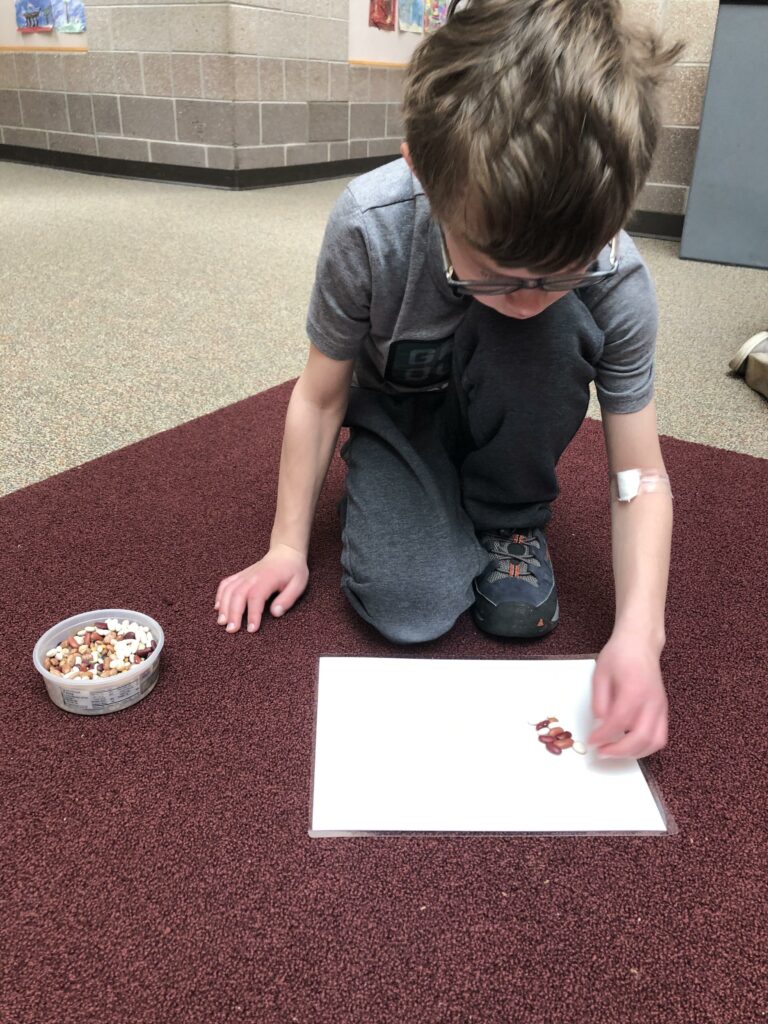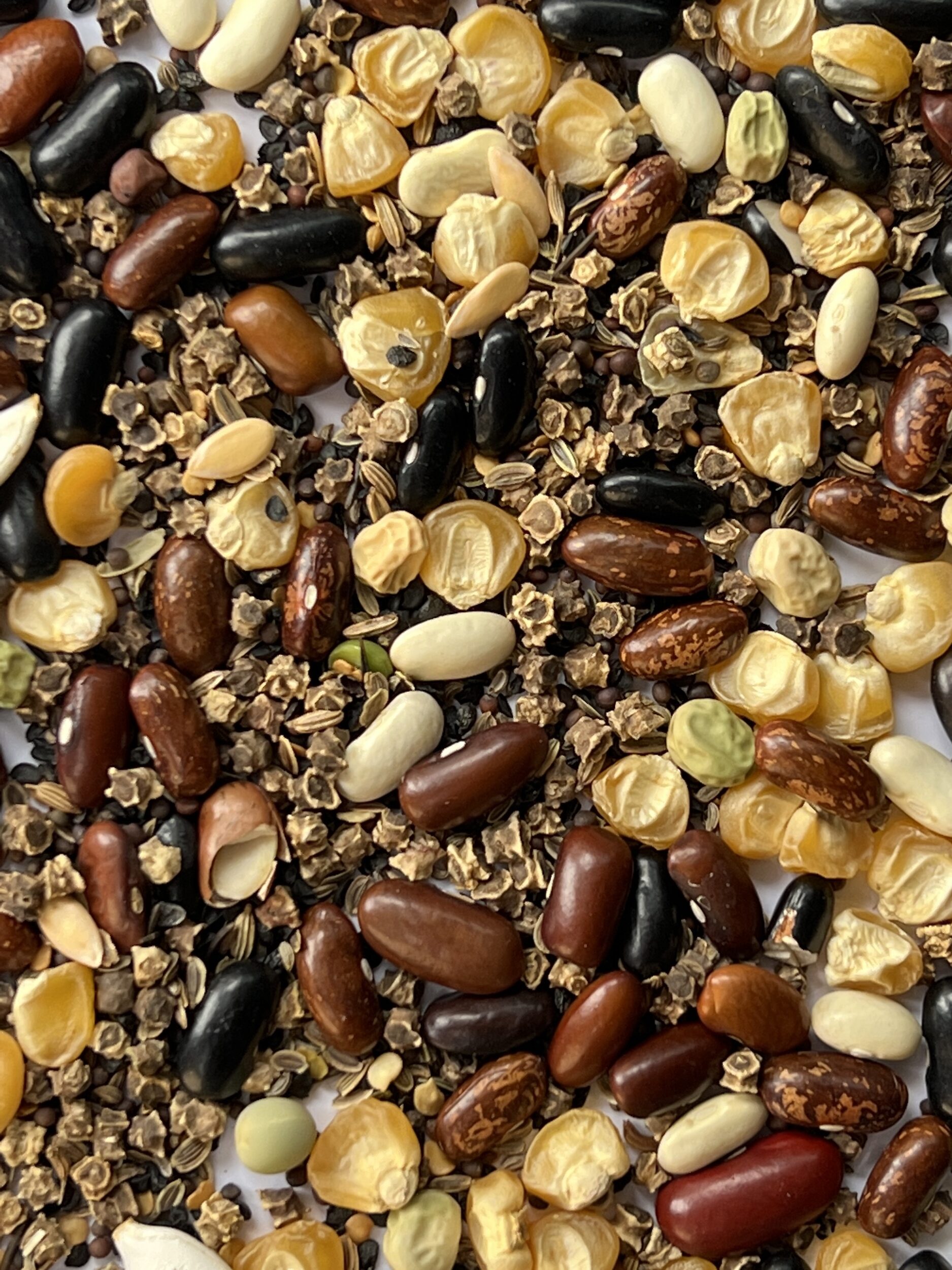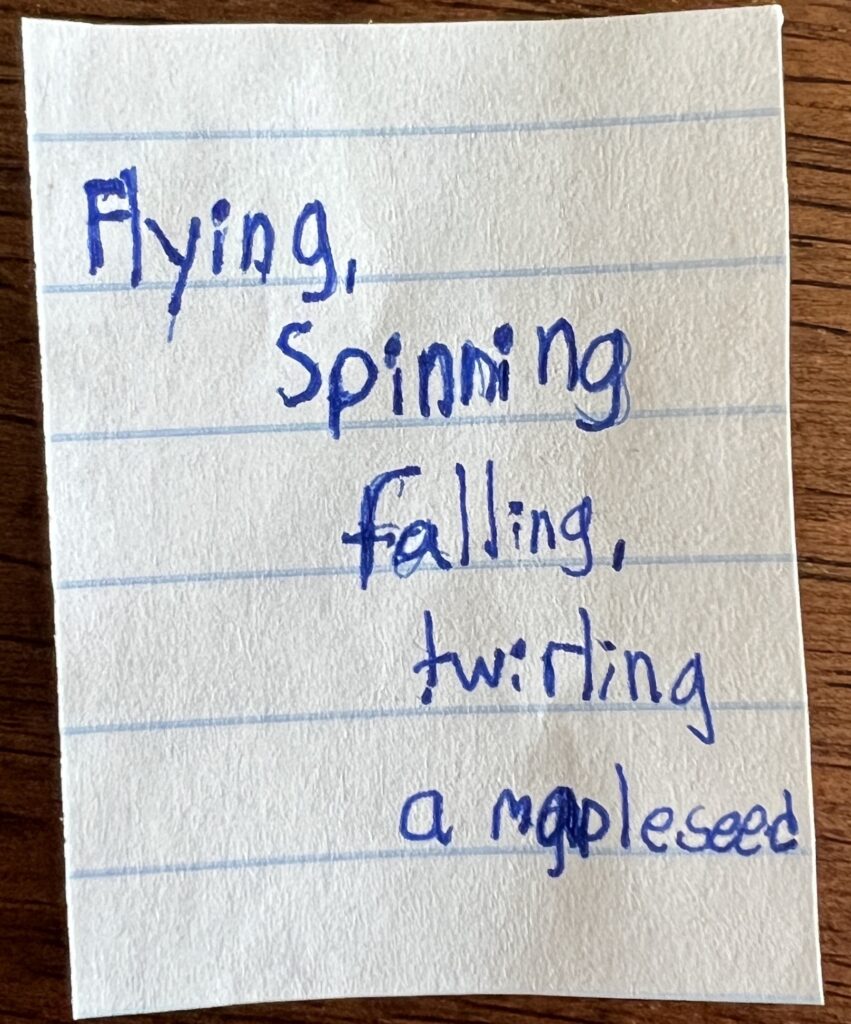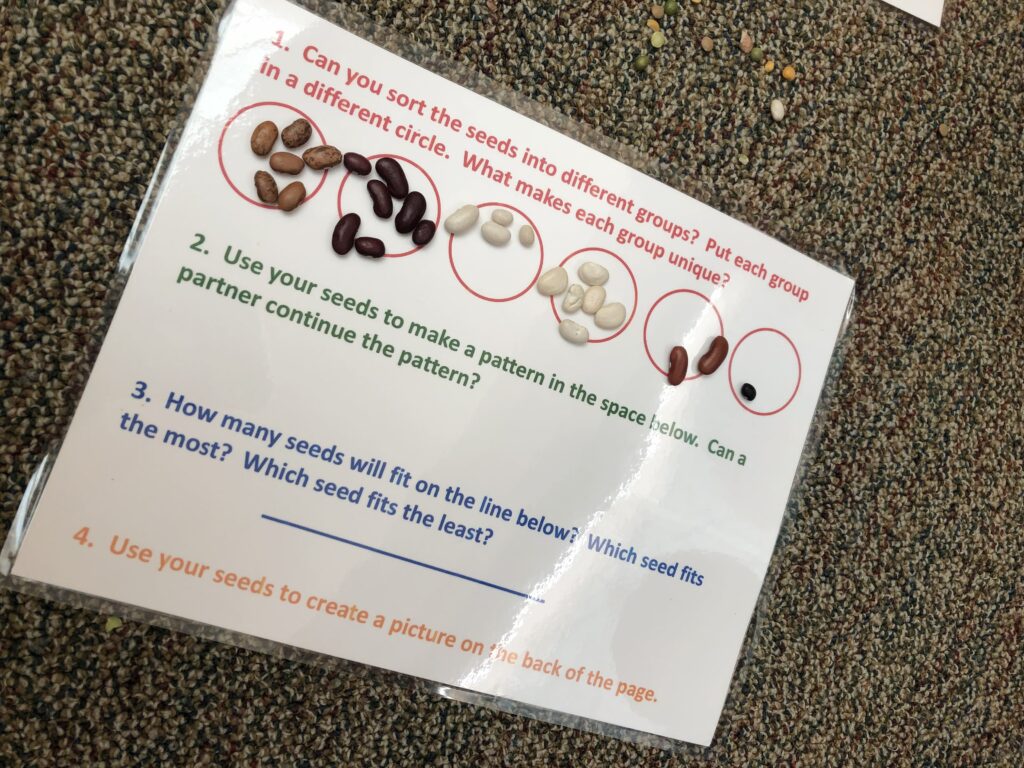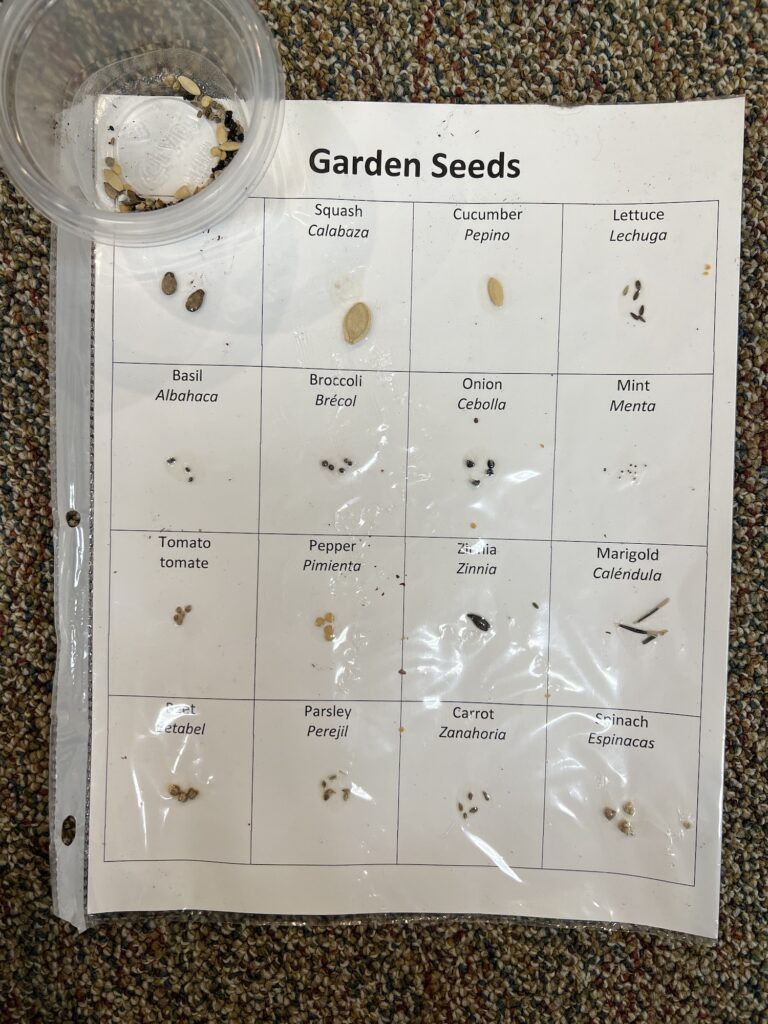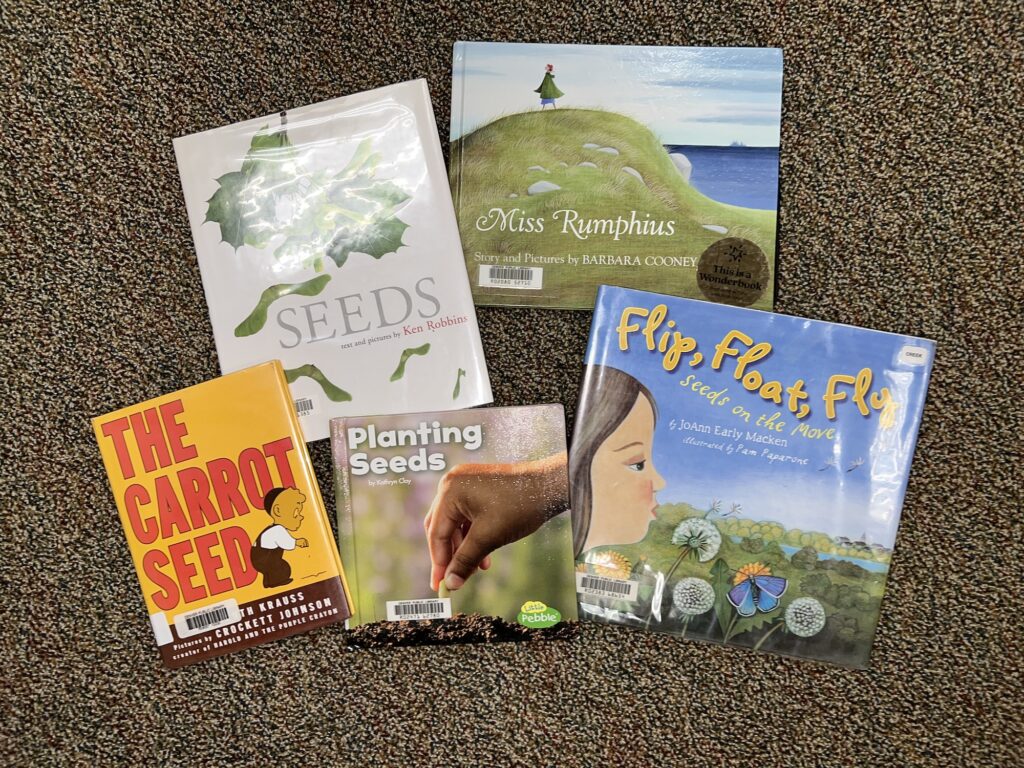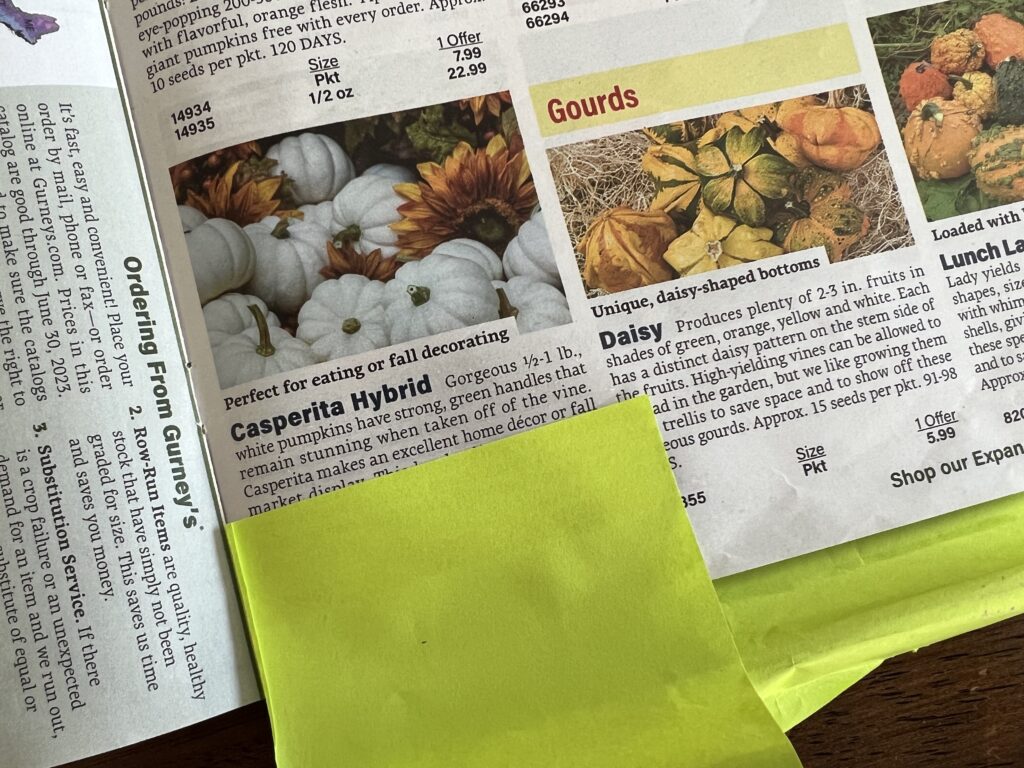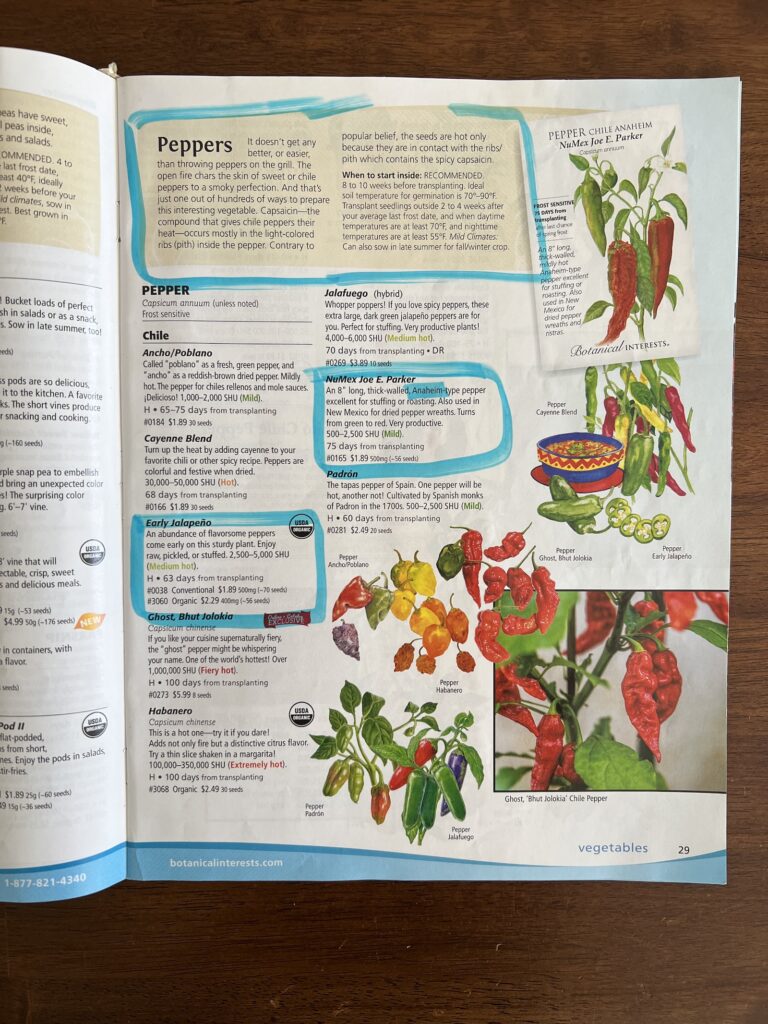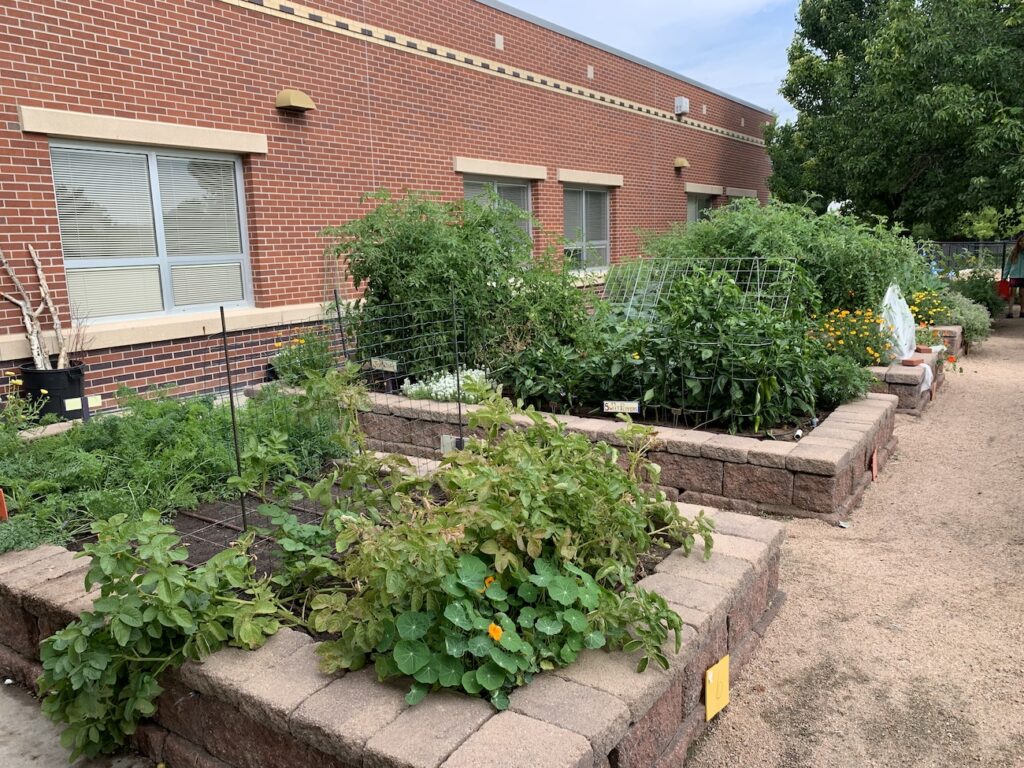
Square Foot Gardening is a popular method of organizing and planning a vegetable garden. It provides an efficient way to grow large amounts of vegetables in a small space. Its core idea is that the garden is divided into square foot sections and that a certain number of each vegetable can be grown in each square foot. I find this method an easy way to plan and plant a garden with students. It allows them to easily visualize the garden, how much space each plant needs and how many plants can realistically fit into the garden. Then on planting day, the square sections provide an easy way to identify where plants go and to divide labor amongst the students.

When I have students plan the garden, they first start by measuring the garden and drawing a map. The map is drawn on graph paper so that every square foot in the garden is represented by one square on the graph paper. You can create custom graph paper online so that the squares are a reasonable size for your students to use. Then they get to decide what goes into each one of the squares. Based on how much space each plant needs to grow, Square Foot Gardening developed a list of how many plants fit into one square foot. I like to provide a custom template designed for that particular garden so that the students have a key to use as they fill in the squares. The template shows what plants are available to plant and how many fit into each square. Students can cut out the template and glue them onto the map or they can draw them onto the map. I have even drawn a scale map on the classroom floor using masking tape to outline the edges of the bed (one a 1’ equals 3” or 4” scale) and the square foot sections and made cutouts out of construction paper so that students could easily manipulate the plan. When I do it on my own, I use Microsoft Visio on the computer so that I can easily drag and drop the squares into the space.

Once the square foot plan is created, you can practice some basic math problems:
- We have four squares of carrots with 12 carrots in each square. How many total carrots do we have?
- What fraction of our garden is planted in carrots?

In the official Square Foot Gardening method, they recommend using wooden grids that are laid on top of the soil to divide out the garden. Instead, I use cotton string that is anchored at the edges using garden staples. It’s time consuming to lay out but is cheaper than building them out of wood and I don’t have to find a place to store them over the winter. The grids come in handy on planting day, particularly for closely spaced seeds. I don’t find it as useful for large plants like tomatoes that take four full squares per plant. Each student is assigned to plant a single square foot. The grid allows them to easily identify the edges of their planting area and defines exactly how many plants/seeds will get planted into their section. I often define their planting areas even farther by using colored flags or colored popsicle sticks to define what gets planted where (pink flags are for carrot seeds, blue flags are for beet seeds, etc.) and by pre-making the holes using a muffin tin. To help students easily find their square, you can also label each garden bed as a coordinate grid.
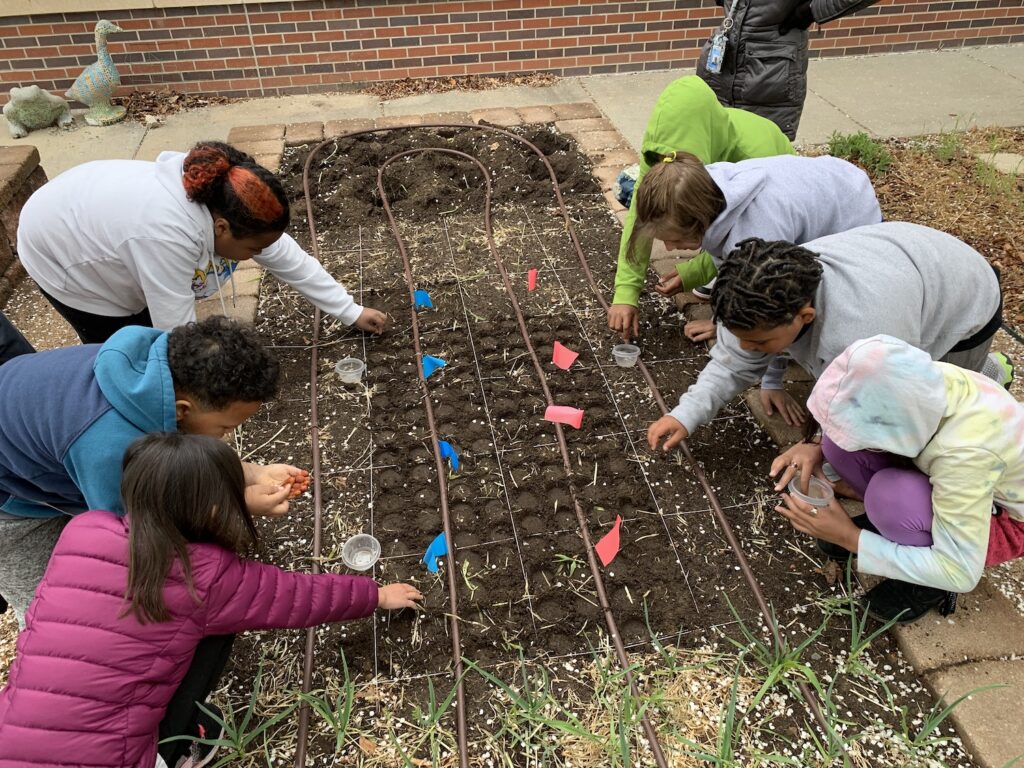
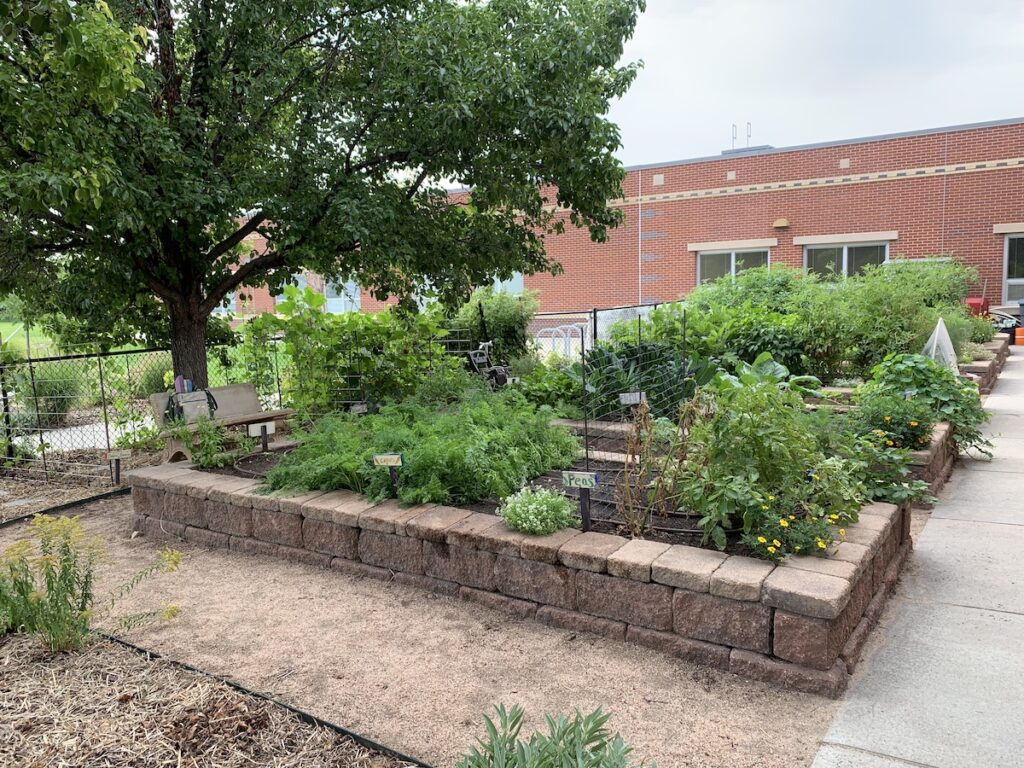
Another benefit of Square Foot Gardening is maximizing your area to grow a lot of food in a relatively small space. Unlike traditional farming systems or large in-ground gardens where you need space to walk in between rows, square foot gardening bumps plants right up next to each other, giving each plant the exact amount of space they need and no more. Below you’ll find a list of the plants we grow and how much space they need. Additionally, you can use trellises to grow vining plants upward to maximize the space even more. I use trellises (cattle panels from an agricultural supply store zip tied to rebar posts sunk into the ground) on the obvious vining plants like pole beans and peas, but also plants that typically spread out a great deal like cucumber, smaller winter squash (acorn, delicata, gourds, mini pumpkins) and melons. I make diligent use of tomato cages for not only tomatoes, but also taller pepper plants and eggplants to help force the growth upward and not outward. All of this compacted space pays off. Last year we grew just over 500 pounds of food in under 400 square feet.
Plant Spacing for Square Foot Gardening
| Plant | Spacing |
| Arugula | Scattered seeds |
| Basil | 4/square foot |
| Beet | 9/square foot |
| Carrot | 12/square foot |
| Chives | 2/square foot |
| Cilantro | 4/square foot |
| Collard Greens | 1/square foot |
| Corn | 4/square foot |
| Cucumber | 4/square foot on trellis (2 on each side of trellis) |
| Eggplant | 1/square foot |
| Garlic | 4/square foot |
| Head Lettuce | 4/square foot |
| Kale | 1/square foot |
| Mesclun/Salad Mix | Scattered seeds |
| Okra | 1/square foot |
| Onion | 4/square foot |
| Oregano | 1/square foot |
| Parsley | 2/square foot |
| Peas | 6/square foot on trellis (3 on each side of trellis) |
| Pepper | 1/square foot |
| Pole Beans | 6/square foot on trellis (3 on each side of trellis) |
| Potato | 1/square foot |
| Radish | 12/square foot |
| Rosemary | 2/square foot |
| Sage | 1/square foot |
| Summer Squash | 1 plant/4 square feet |
| Swiss Chard | 4/square foot |
| Thyme | 1/square foot |
| Tomato | 1 plant/4 square feet |
| Winter Squash | 4/square foot on trellis (2 on each side of trellis) |
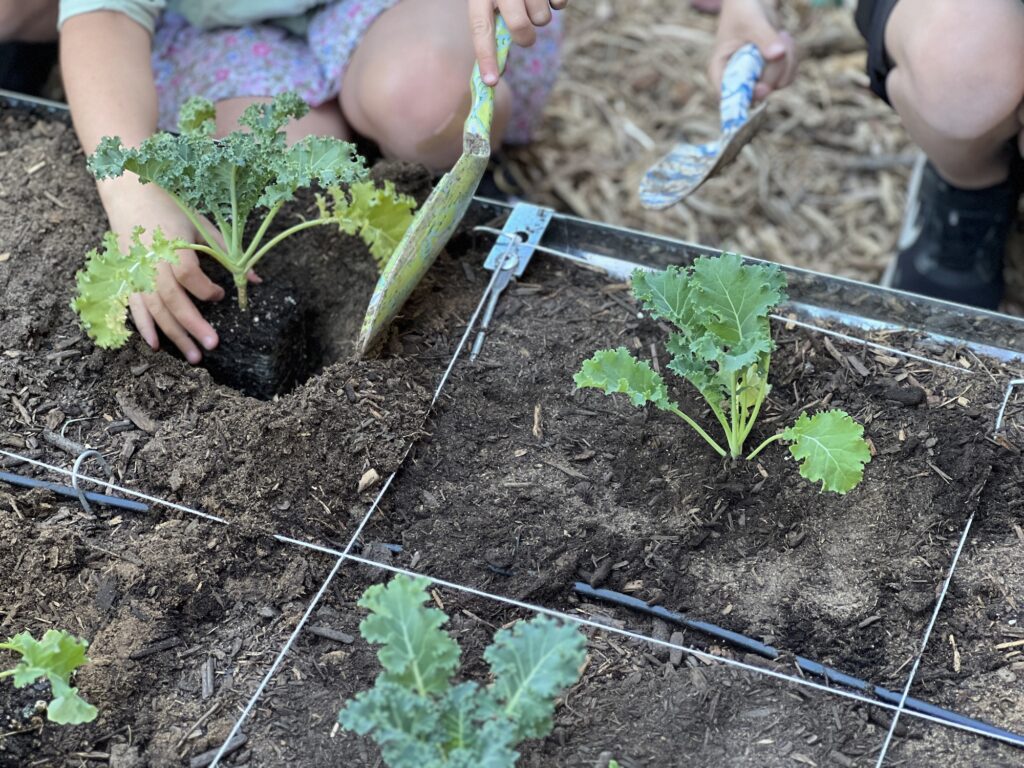
The one part of Square Foot Gardening that I don’t follow is their soil mix. They recommend a do-it-yourself mixture of 1/3 compost, 1/3 peat moss and 1/3 vermiculite. Here in Colorado, this mix just dries out too quickly and the materials aren’t very sustainable. If we need to fill new beds, I will use a planters mix (50% topsoil, 50% compost) from our local organics recycling company. If you are ordering from somewhere, be sure to check out their product first. I’ve seen way too many “raised bed soils” that are way too heavy and filled with coarse, heavy materials to work well. Also, instead of replacing the soil every year as the Square Foot Gardening method recommends, we use regenerative practices such as minimal till, cover cropping and adding compost to keep the soil healthy and fertile.
I honestly cannot imagine gardening in a school environment any other way. It just makes sense from a planning, logistics and production perspectives. If you’re not already familiar with it, I encourage you to read more. It’s not really that difficult to figure out and the payoffs are huge!
